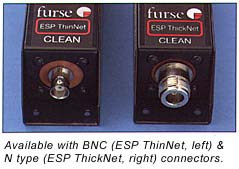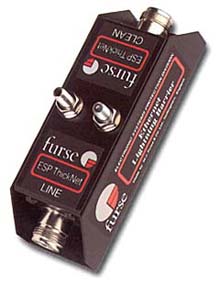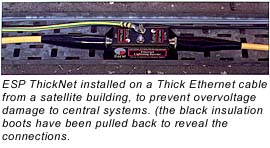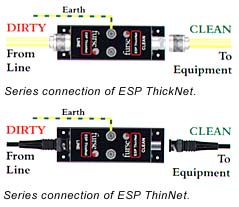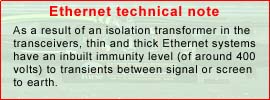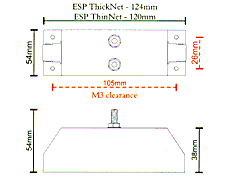| Home › Lightning & Surges Protection › Electronic Systems Protection |
|
| |
|
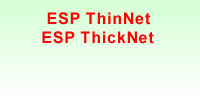
|

|
|
To protect twisted pair Ethernet (10 or 100 base T) networks with RJ45 connections use ESP Net-100. Application Use these protectors on thick and thin Ethernet cables to protect: Features and benefits |
|
||||||||||||||||||||
| Installation Connect in-line with the Ethernet cable near to where
it enters/leaves the building or close to the equipment being protected.
This should be close to the system's earth star point (to enable a good
connection to earth). Install either within an existing cabinet/cubicle
or in a suitable enclosure. If installing two or more protectors together
these can be simultaneously mounted and earthed via a CME kit. |
Suitable accessories Simultaneously mount and earth up to two ESP ThinNet or ThickNet protectors on a CME 4 or up to four on a CME 8 (see page 43). Enclosures for a single ESP Thick or ThinNet (the WBX 3/G) or for protectors on a CME 4 (the WBX 4) or CME 8 (the WBX 8) can be found on page 44. |
| Electrical specification | |||||||||||||||||||||
|
| Transient specification | |||||||||
|
| 1 The maximum transient voltage let-through the protector
throughout the test (+/-10%), signal to screen and signal/screen to earth.
Response time <10ns. 2 See 'Ethernet technical note above'. 2 Tested with 8/20µs waveshape to ITU (formely CCITT), BS 6651:1999 Appendix C. |
| Mechanical specification | ||||||||||||||||||
|
||||||||||||||||||
